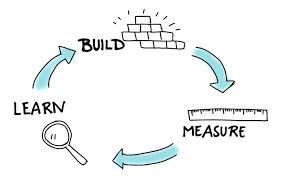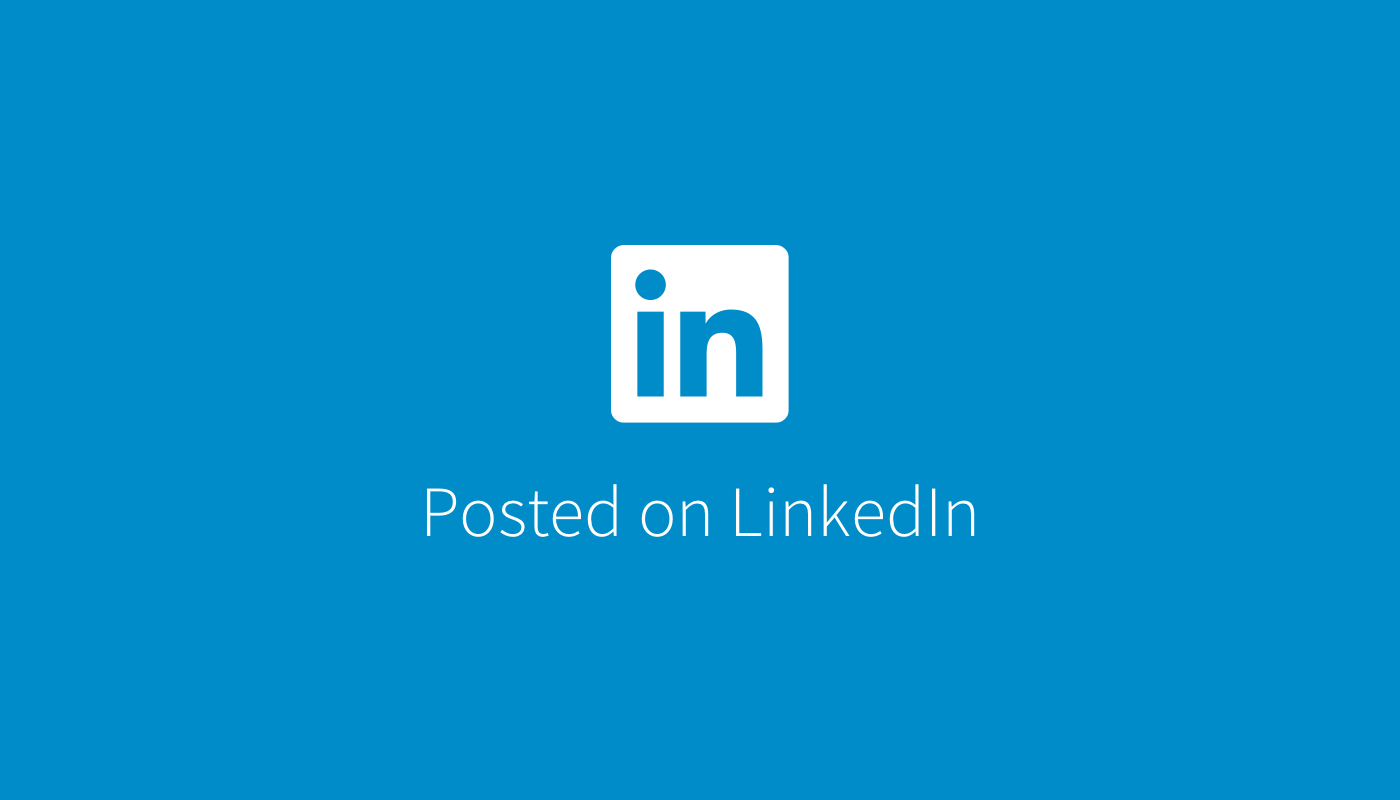8 bits for a Byte: This issue is your executive crash course on AI-native culture. Forget "buying AI tools"—this is about rewiring how your org builds, learns, and trusts. From replacing SaaS with Replit hacks to dismantling permission culture and embracing lightning-fast learning loops, these Bits reveal the playbook for surviving and thriving in the age of unstoppable automation. Let’s get tactical.

🔥 FREE Vibe Coding Webinar 🔥
Think Vibe Coding is overrated? Maybe you're already a wizard.
If not, you need this. I’m giving a free 40-min crash course that'll transform how you use AI—plus killer prompting tips to boost your game.
How to get in?
Refer 3 friends OR
When you give me a 5-star review at the end of the Webinar you will buy me a coffee.
Easy. Limited spots. Don’t miss it.
Or just say screw it and buy me a cup of Joe right now. I drink a pot a day so I can use all I can get!

Try inFlow Free—$499 Off for a Limited Time
Get started for free and see how simple inventory management can be.
inFlow helps you stay on top of inventory, track costs with precision, and protect your bottom line.
You’ll always know how much you’re spending, what you’re making, and where you can save.
It also simplifies inventory, orders, shipping, and barcode scanning in one easy-to-use system—rated “easy to use” by 93% of users.
Rated 4.6 stars across 500+ reviews on Capterra and named a top pick in multiple competitive comparisons
inFlow connects with Shopify, Amazon, QuickBooks, UPS, and 90+ other tools, so everything works together without the manual work.
Try it free and, for a limited time, save $499 when you upgrade with code EASY499.
An inFlow specialist can show you how to simplify inventory from day one
✅ See how others are navigating change in our case studies
🚀 Compare plans on our pricing page
Let’s Get To It!

Welcome To AI Quick Bytes!
Bit 1: AI-native teams don’t ask for permission to build—they just do it.
Most companies kill good ideas before they’re born—too many handoffs, too much process, not enough ownership. AI-native work flips that script. It’s about moving straight from idea to execution, no gatekeeping required.
That’s exactly what I did with Replit. Instead of relying on external vendors or IT queues, I built production-ready tools myself. I owned the process, cut costs, and made my learning part of the value chain.
Spun up a complete Silicon Valley AI Think Tank site with with backend admin in hours. Have been enhancing daily. (~$5K website design and creation bill saved, if I can dream it I can add it freedom).
Built a curation system that doubled as daily code practice for keeping up with reading, build skills and share at work .
Automated LinkedIn-to-HubSpot scraping, replacing a $35/month tool.
ACTION BYTE:
If you want AI-native culture, reward people who build first, ask later.

Quote of the Week

Bit 2: Agree more than 100%. Is that possible ? :-)


Bit 3: Legacy orgs kill velocity with process. AI-native orgs default to done.
Most companies think process is their safety net. But too often, it’s a cage. Meetings, approvals, and inter-team dependencies add a hidden coordination tax that smothers good ideas before they ship. AI-native teams skip the permission theater and go straight to execution.
When you remove the gatekeepers, you unlock a new operating model: see a problem, build a solution immediately. It’s not about ignoring quality or alignment—it’s about making ownership real. The fastest teams aren’t cutting corners; they’re cutting handoffs.
Typical org flow: idea → 26 meetings → design backlog → budget approvals → dev prioritization → eventual scope cut.
AI-native flow: idea → open Replit → build → ship → iterate.
The result: 10x learning loops and dramatically cheaper learnings.
ACTION BYTE: If you want real AI transformation, stop praising process and start rewarding outcomes.

Stop Asking AI Questions, and Start Building Personal AI Software.
Transform your AI skills in just 5 days through this free email course. Whatever your starting point, by Day 5 you'll be building working software without writing code.
Each day delivers actionable techniques and real-world examples straight to your inbox. No technical skills required, just knowledge you can apply immediately.


Trust
Bit 4: AI-native culture isn’t about technology—it’s about trust.
Most companies think their problem is tooling. It’s not. It’s that they don’t trust people to act without layers of permission and oversight. AI-native orgs thrive by removing the friction. The person who wants to solve a problem owns the solution.
That means real autonomy: no waiting on budgets or design backlogs. But it’s only possible if leadership embraces radical trust. This isn’t just operational—it’s cultural. Without it, all the AI tools in the world won’t save you from slow, mediocre execution.
Ownership: clear accountability from start to finish.
Autonomy: the authority to build without blockers.
Trust: the cultural glue enabling true speed.
ACTION BYTE: Your tech stack doesn’t make you AI-native. Your trust model does.


Bit 5: The real edge for AI-native teams? Relentless learning loops.
Legacy companies over-engineer certainty. They treat planning as proof of competence while shipping too slowly to learn. AI-native teams flip that. They prioritize frequent, fast learning over perfect plans. It’s not chaos—it’s a disciplined approach to discovery.
When you cut dependency drag and approvals, you make it easy to test ideas and adapt in real time. Instead of waiting months for sign-off, teams ship daily improvements. That cultural shift turns learning from an afterthought into the core operating model.
Short cycles mean constant feedback to improve outcomes.
Lightweight experiments replace bloated, risky waterfall planning.
The org’s real moat becomes its ability to learn faster than competitors.
ACTION BYTE: If you want AI-native speed, stop planning for certainty. Build systems that reward learning.

I have been using Replit and it is truly amazing. I have already built 2 applications and one website that I use on a daily basis. Sign up below to start VIBING for us both to receive extra monthly credits!
Why Replit Agent Isn’t Just for Developers — It’s for Leaders Who Build
We’re entering a new phase in AI—where hands-on experimentation isn’t just a nice-to-have, it’s a leadership imperative. If you’re in the C-suite, one of the most strategic things you can do right now is experience what it feels like to co-create with AI.
Replit Agent makes that possible.
This isn’t just an AI that autocompletes code. It’s a context-aware assistant that helps you build, end-to-end. No deep technical background required. Just an idea and a few lines of plain English.
What does this mean in practice?
You can prototype internal tools—think dashboards, bots, workflow automations—by describing what you want and iterating in real time.
You can test business hypotheses by spinning up working interfaces instead of waiting on product sprints.
You can personally explore the boundaries of what AI can (and can’t) do—equipping you to lead with credibility and clarity.
Replit Agent isn’t about replacing your dev team. It’s about making sure you can move faster, think visually, and engage with the product and engineering side of the house in a new, more empowered way.
Why Replit over others?
Tools like GitHub Copilot and Cursor are great accelerators—for coders. Replit Agent is different: it helps non-coders go from concept to execution. It handles project scaffolding, builds logic from prompts, and can deploy live applications.
This is your sandbox. Use it to model a customer experience idea. Draft a simple LLM-powered assistant. Or explore what a future product might feel like—before funding a roadmap.
Action Byte: If you’re leading digital transformation from the top, your credibility comes from doing, not delegating. Replit Agent gives you a fast, intuitive way to understand—and shape—how your org will build in the AI era.


Bit 6: Sunday Funnies
I think this fits this weeks newsletter perfectly :-)

Bit 7: AI-native orgs aren’t anti-process. They’re anti-bloat.
Process isn’t evil—it’s necessary. But too many companies mistake process for progress. They add layers of approval, endless meetings, and elaborate roadmaps that make them feel in control while killing momentum.
AI-native teams treat process like code: keep it minimal, modular, and only as complex as it needs to be. They introduce structure only when it serves speed and quality, not as an excuse for alignment theater. The result is an organization that moves faster, adapts better, and burns fewer resources on coordination.
Processes are lightweight, designed to reduce—not add—friction.
Teams own their outcomes without waiting for permission.
Speed becomes cultural gravity, making slow work feel unnatural.
ACTION BYTE: Audit your processes. If they don’t reduce friction or improve quality, cut them.

Breakfast that’s actually F-A-S-T
No more sad granola bars or sprinting out the door with just coffee.
Huel Black Edition is a ready-in-seconds shake packed with: 40g protein, 6g+ fiber, 0 prep. Just shake, sip, go.
Get 15% off your first order + a free t-shirt and shaker with code HUELSPRING, for orders over $75.


The Hammer of Justice!
Executive Summary AI-native development means anyone with the right prompts can spin up your product’s core features in days. Look at Inkless—a solo developer built a free e-sign alternative using AI tools in two days. DocuSign’s answer? A cease-and-desist. But here’s the thing: you can’t win this new game by defending feature parity one lawsuit at a time.
The real moat isn’t preventing copying—it’s building trust. I’d pay DocuSign for the confidence that my critical business contracts are secure, private, and legally rock-solid. That’s what they’re actually selling, not just “document signing.” In a world where AI-native competitors will keep popping up overnight, your differentiator won’t be IP fences. It will be the safety, trust, and reputation your customers can’t get from an unknown clone.
AI-native creation lowers the cost of competition to near zero.
Legal threats can’t stop unstoppable copying of core functionality.
Trust, brand, and reliability become your defensible advantage.
ACTION BYTE: If your strategy is to sue the clones, you’ve already lost. Invest in trust. Make customers want to choose you over the free alternative.

This Week’s Byte: The AI-Native Leadership Playbook
As automation becomes inevitable and ubiquitous, evolving into an AI-native leader is no longer optional—it’s your competitive imperative. This week’s edition is your executive guide to mastering the cultural operating system that will define the winners of the AI era.
Imagine AI not just as a productivity tool but as the catalyst for a profound organizational rewiring—one that rewards trust, autonomy, and relentless learning over bureaucracy and control. Just as the shift from desktop to mobile demanded new design languages, becoming truly AI-native requires rethinking how your teams build, learn, and own outcomes at every level.
Strategic Overview
Our journey starts by confronting the myth that buying AI tools = transformation. True AI-native culture demands tearing down permission barriers so builders can move from idea to execution without gatekeeping. It's about embedding trust as your operational backbone—giving people ownership and autonomy to act with speed and accountability.
From there, we explore how legacy process thinking kills velocity. AI-native teams reject bloat in favor of lightweight, modular systems that enable continuous shipping and learning loops. It's not about ignoring quality—it’s about making learning your core competency so you adapt faster than the competition.
Most importantly, this playbook calls for radical trust. Without it, no AI investment will save you from slow, mediocre execution. AI-native leadership is about redesigning the trust model itself: empowering teams to act decisively, fail quickly, and learn relentlessly.
Finally, we address the real defensible moat in an age where anyone can copy your product overnight: trust. Brand, reliability, and reputation become the assets competitors can’t clone with a prompt. Investing in these is your best protection against disruption.
Closing Reflection
As you read this week’s Bytes, I invite you to ask: How are you building a culture that doesn’t just use AI, but thinks and moves natively with it? Because in the age of unstoppable automation, the difference between surviving and thriving will be how fast—and how bravely—you can reinvent how your organization learns, builds, and trusts.
Until next time, take it one bit at a time!
Rob
P.S. Thanks for making it to the end—because this is where the future reveals itself.
What you just saw isn’t merely a clever hack. It’s a glimpse into a world where replicating software is frictionless, near-instant, and almost free. The implications are profound: when anyone can spin up a functional clone in hours, the entire SaaS landscape is upended.
Why keep paying subscription fees when you can build, deploy, and own the stack yourself?
Make no mistake—this shift won’t topple Big Tech overnight. But for solo founders and niche creators, it’s an existential moment. The barriers to entry—and the moat around your business—are evaporating in real time.
Call to Action:
If you’re a builder, a founder, or a curious observer, don’t sit on the sidelines. Start experimenting now. Learn how to create with these tools before someone uses them to outpace you. The era of AI-native entrepreneurship has already begun. Are you ready to build in it?HO.
Join thousands of satisfied readers and get our expertly curated selection of top newsletters delivered to you. Subscribe now for free and never miss out on the best content across the web!








